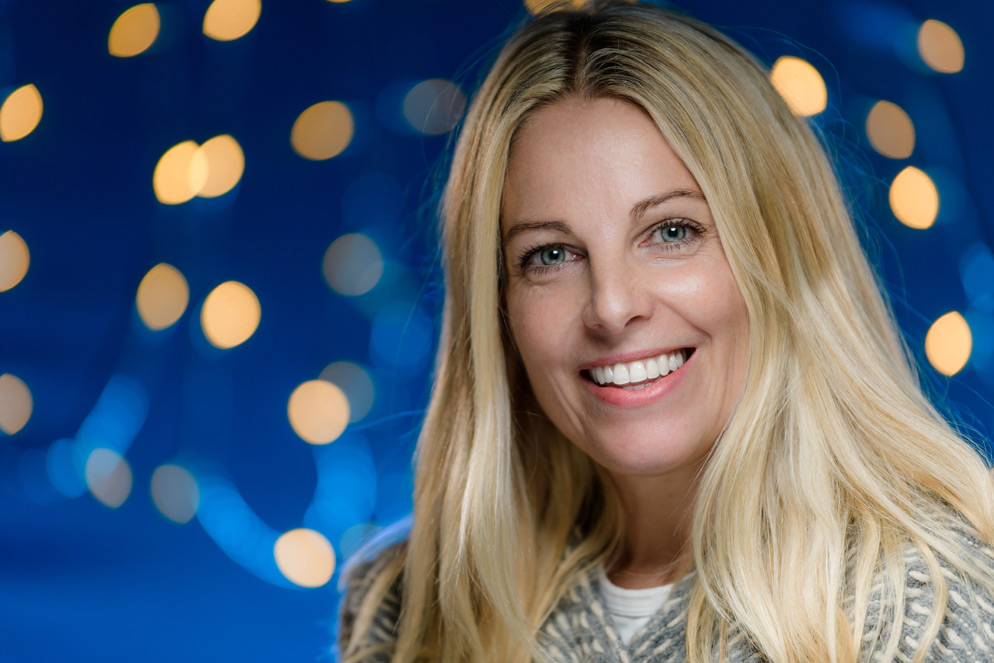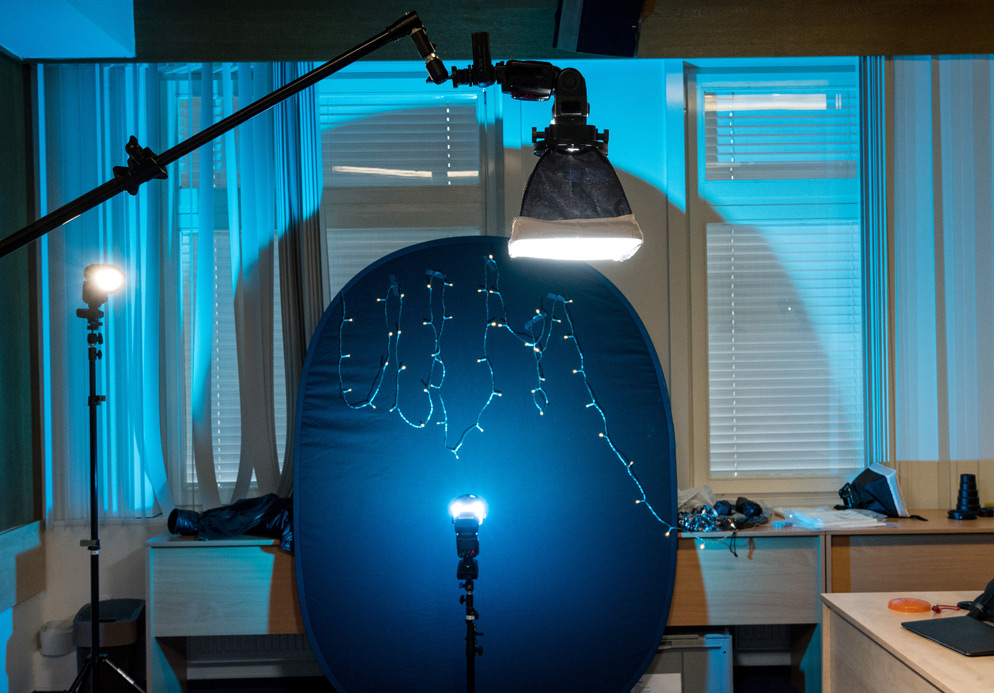Holiday Lights and Bokeh Create a Fun Background for a Portrait
Behind the scenes at portrait lighting workshops with Speedlight flash master David X. Tejada
D850, AF-S NIKKOR 70-200mm f/2.8G ED VR II, 1/20 second, f/2.8, ISO 100, manual exposure.
The Portrait Workshop Series
If you're visiting for the first time, we're presenting here a dozen photos taken at portrait photography workshops by the noted commercial photographer and Nikon Creative Lighting System expert David X. Tejada.
To get the most from his tips, techniques and comments, be sure to take a few moments to check out our notes on flash, metering and the CLS before viewing the photos.
Bokeh Background
The lights back there are battery-operated twinkle lights commonly known as Christmas lights. "Just white lights here," David says, "but you can get them in colors."
This portrait was made during one of his one-day workshops, during which he demonstrates as many flash techniques as he can: bounce lighting; using a small softbox; how to use umbrellas, grids, snoots, barn doors and, occasionally, Christmas lights. It's pretty much an "imaginative accessories" session.
"I wanted a nice dark background, so I set my pop-up 3x6-foot black reflector behind my model and draped the twinkle lights over it. With my 70-200mm lens at 185mm and wide open [at f/2.8], I knew the twinkle lights would soften out for a nice bokeh effect."
The main light was an SB-900 in David's European 8x12 softbox, (many similar models are available in the States) set above and about two feet in front of the model. "I don't usually point my light directly down on a subject—I'm trying to use the feathered edge of the light. What I do is ask the subject, once her head is positioned as I want it, 'Just raise your eyes—do you see the white surface of that softbox up above?' If she can, I tell her to bring her eyes back to me because now I know for certain that there's going to be catch lights in her eyes. If she sees the light, the light sees her, but she's receiving not direct light, but that feathered edge of the light, the softest portion of the light itself. It's the big effect of a small light."
Three other Speedlights were used, all SB-910s: one left, one right and one pointed at the background. The side lights were fitted with grids and one half CTO (Color Temperature Orange) gels to warm the light. The SB-910 on the background has a full CTB (Color Temperature Blue) gel on it. When the model was seated, David's 30-inch Lastolite TriGrip reflector, with a Softsilver surface, was placed low in front of her to bounce some light back up to her face.
With five lights at work for this photo, the Nikon Creative Lighting System's group feature made control of the Speedlights relatively easy. The main light was designated Group A, the sidelights Group B and the background light Group C. From the camera position David was able to control the power output of each group. "The twinkle lights are a constant light source, so my shutter speed—determined by a Matrix metered test shot—controls the amount of ambient light they'll provide."
After setting the f/stop and shutter speed, the rest of the exposure was determined by the power output of the SB Speedlights: 1/16 power for Group A, 1/8 for Group B, 1/8 for Group C.







